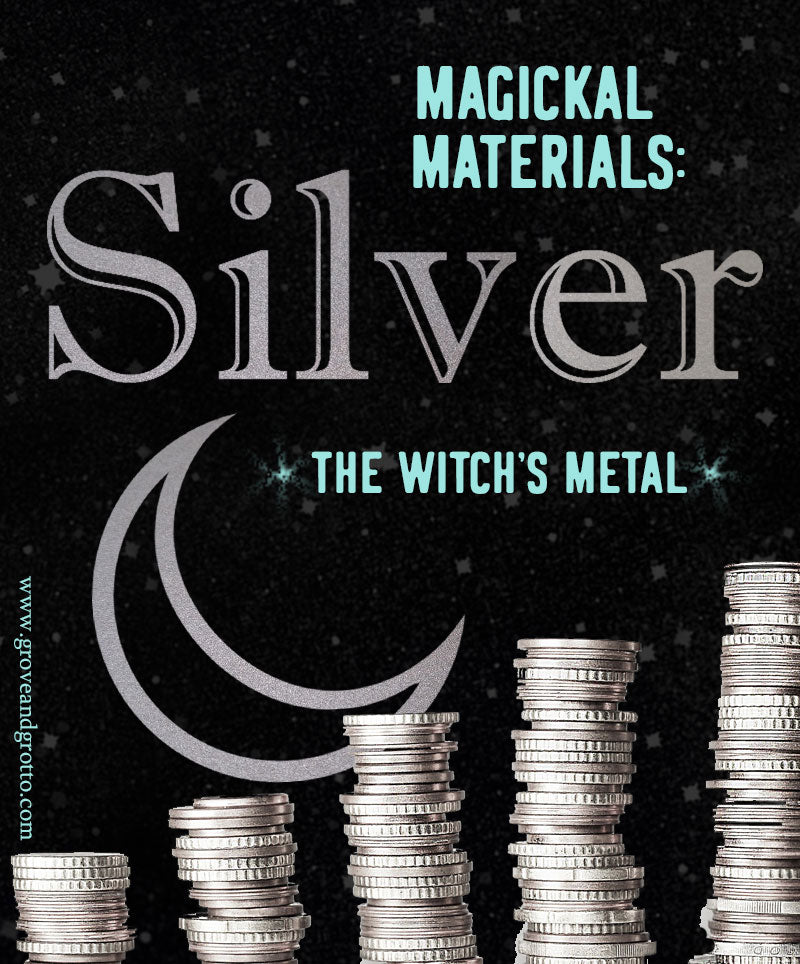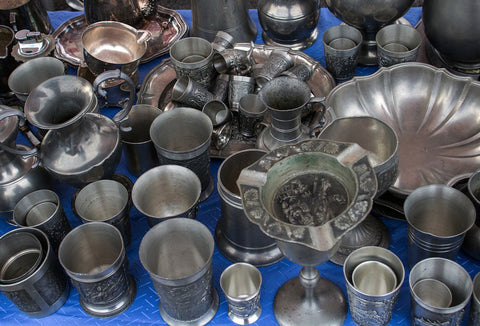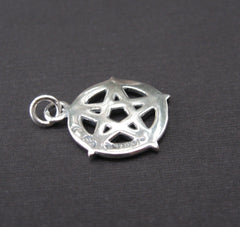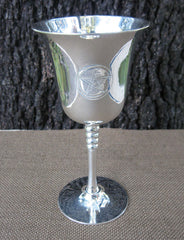Magickal materials: Silver
Posted by Michelle Gruben on

Gold may be the most prized of earthly materials, but the magickal gleam of silver puts it (traditionally) in second place. Silver was one of the first metals known to the ancients—the Bible mentions riches of gold and silver. Silver deposits are found in nature, but (unlike gold) rarely in a pure state. Over the centuries, miners and crafters learned to take this dark grey rock and turn it into tools and ornaments of luminous beauty. Its Latin name, argentum, comes from the Sanskrit, arj-una (“light”).
Just as gold is linked to the vibrant hue of the Sun, the gentler glow of silver is tied to the Moon. Its Lunar qualities were observed by the ancient Egyptians, who represented the metal with the emblem of a circle. Later on, medieval alchemists codified silver as one of the seven planetary metals and attributed it to the Moon. This old association with reflection, receptivity, and lunar goddesses is the strongest influence on silver’s magickal heritage.
Correspondences of Silver

As a Lunar material, silver corresponds to all attributes of Moon magick. Dreams, visions, psychic perception, wishes and blessings all fall under the domain of Lunar magick. As the Moon controls the ebb and flow of the tides, silver is linked more broadly to the magick of Water—love, healing, sensuality, and patient force. Silver is so ingrained in folk charms that you might not even be aware of its presence. But if you’ve ever cheered newlyweds with silver bells or thrown a silver coin into a wishing well, then you, too are a practitioner of silvery magick.
Silver Amulets
Silver amulets have long been used to bring good fortune to the wearer. As the wandering Moon governs travel, silver amulets were used in ancient times to ensure the safety of travelers. Silver is also suitable for love charms and spells for psychic sight. Many Wiccans wear a pentagram necklace made of silver.
Silver is both malleable (easy to shape) and a good conductor. It is one of the easiest materials to charge magickally, and holds energy relatively well. The best time to consecrate or refresh a silver amulet is during the full moon. Allow the amulet to charge in the moonlight, either outdoors or in a window. You can also anoint it with blessed water, incense, or oil.
There are different grades of silver jewelry, but the most common is .0925 Sterling silver, which is 92.5 percent pure silver by weight. Sterling silver will often (but not always) carry a stamp reading ".925" or "Sterling."
The Silver Chalice
On the Wiccan altar, the chalice most often corresponds to the element of Water. A silver chalice is a popular choice for holding offerings and representing the Goddess in the Great Rite.
If you choose a silver chalice, there are a couple of things to consider. The first is cost: With silver currently trading around $20 per ounce (and silverwork a dying art) a solid silver chalice can cost thousands of dollars. Most affordable silver chalices are made of base metals plated with a thin layer of silver. The silver plate can wear off with use, exposing the metal below. This may be fine for your purposes, or it may defeat the purpose of having a silver vessel. If you must have pure silver, try looking at antique tableware or (gasp!) a church supplier.
Another issue with silver is its reactivity. Silver especially reacts with acid and sulfur—both of which are commonly found in food and drink. Silver is just not very tasty. This isn’t a problem if your chalice will be used symbolically, or will hold only water. But other beverages—like wine, tea, fruit juice, and milk—don’t pair well with a silver chalice. Stainless steel and pewter are common substitute metals for “working” chalices.
Read more in "Caring for a silver chalice."
Silver Coins

Up until 1964, the U.S. Mint produced coins using up to 90% silver. Coins with a high silver content have a special place in folklore and magick. If you carry a silver coin in your pocket, says one superstition, you will never be without money. (Extra points if the coin bears your birth year.) A silver coin under a welcome mat keeps away bad visitors, while a coin tossed into moving water keeps good fortune flowing. A southern funeral tradition calls for the deceased to be buried with a silver dollar—a practice that hearkens back to the ancient Greek custom of paying the ferryman’s toll. In Hoodoo, graveyard dirt is “bought” with a silver dime, preferably a pre-1945 Mercury dime.
In Place of Silver
Can you use another metal in a working that calls for silver? Yes and no.
Industrially, there is no real replacement for silver—it has unique traits that simply do not belong to other elements. Alchemists would probably say the same thing about its spiritual properties.
On the other hand, other materials may have properties that are perfectly compatible with your magick. And as practical magicians, we know that it doesn't make sense to take out a second mortgage to buy ingredients for a spell. Your imagination and intention are far more important than what substances are on the altar.
When silver is out of the question, silver-colored aluminum and pewter objects may be used. Silver-grey paint and fabric can impart a silver-y feel to a budget altar—but do avoid toxic materials like lead-containing alloys and metallicized plastic. Personally, I prefer non-ferrous metals as silver substitutes, as steel has a Mars resonance that is out of place in Lunar workings.
One caveat? Don't cut corners when making offerings to spirits and the more discerning Fae. If you're seriously broke, your frugality may be excusable, but laziness and cheapness will diminish your working to say the least. (Especially when the expense is small, like a silver dime.) Be classy and get the real thing whenever possible.
Caring for Silver

All silver articles will eventually tarnish from exposure to the air. Generally, the lower the silver content, the faster the item will tarnish. While it diminishes the gleam of your silver, tarnish is harmless and only affects the outer layer of the metal. A commercial jewelry polish (or one of many household remedies) will have your silver looking all shiny again.
Magickally speaking, silver is not a material that holds negative energy (or any energy) indefinitely. It has a natural nobility and fluidity. You can think of silver as a stream—anything poured into it will linger for a while, and then pass on. For this reason, silver doesn’t ever need to be “cleansed” in the traditional sense. (Though you may still wish to attune used items to your specific purposes.) To keep them working effectively, recharge your silver tools every lunar cycle.
Read more in the "Magickal materials" series, or check out the archive!



